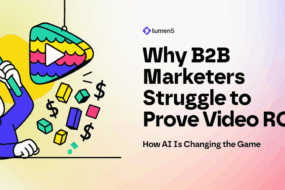
AI – to infinity and beyond. 🚀
Believe it or not, 77% of the devices we use today feature one form of AI or another. From AI-powered voice assistants to facial recognition and autocorrect recommendations, we interact with AI already and daily!
Since the end of 2022, the most recent advancements in Artificial Intelligence (AI) technology have opened up the commercialization of AI, impacting and improving businesses and consumers’ lives.
Its quick adoption has been nothing short of a phenomenon and by 2030 its growth will hit $1.811 billion!!! Why the huge AI growth?
AI presents exciting opportunities for businesses to improve their operations and better serve their customers. However, with these opportunities also come risks that need to be carefully considered. Don’t worry though, there are ways to safely implement AI!
De-risking AI: How to Leverage, De-risk, and Safely Implement AI for Businesses

How Businesses are Leveraging AI
This new wave of generative AI tools is rapidly becoming the key to success – changing businesses and their operations both internally and externally! Businesses are faced with great opportunity and risk during this recession. And of course, the ever haunting “do more with less” mindset.
Here are some ways businesses are leveraging AI:
1) Research
Before the internet, we went to the library. With the internet, why open a book? And now with AI, why spend hours looking for resources or opening 20+ tabs when researching? Teams are using AI to synthesize information to reduce time researching and move right into creating content. AI is most often being used as part of a beneficial partnership. And in this case, AI is a researcher that is available 24/7.
2) Generating Content
With generative AI, you can actually automate the creation of content, such as blog posts, social media posts, and even entire marketing campaigns! This can be a huge time-saver, which means you can focus your efforts on other important aspects of your role.
AI can really help marketing leaders save time and effort when it comes to creating certain assets. This means that the team can concentrate on achieving its goals and generating ROI. With a more adaptable and nimble marketing team, you can pinpoint and boost the most effective channels and campaigns, which ultimately leads to increased revenue and a deeper understanding of performance.
However, AI can run a bit wild and there are some risks to remember.

Identify Risks for AI
1) Lack of Oversight and Accountability
If there is an issue with any information or new data, it is hard to pinpoint exactly “who” or “what” is at fault. Is it the employee who used AI? Or is it the AI itself? Who’s accountable here?
If an employee were to make a mistake, it is easy to sit down and have a conversation regarding the issue. And even possibly come up with a solution. However, if the AI does bad work or makes a bad decision, there is no accountability. And although language models are getting easier to translate and understand, it is still a huge black box. Its conclusive thoughts are unknown and unexplainable and that can make the iteration cycles a bit trickier.
2) Reliability and Information Accuracy
Is the AI hallucinating? At times, AI can “hallucinate” and provide inaccurate information that may seem true. For example, you may ask the AI tool for 5 data points: 4 could be real and 1 could be fake. Similarly to above, AI’s reliability and information accuracy is inconsistent and hard to prove – unless fact-checked. Relying solely on AI is risky as it can also lead to lack of citation or inaccurate information due to misunderstanding, which businesses should address and take very seriously.
3) AI Bias
Because AI is trained by human knowledge, it has the potential to amplify and echo any bias that is inherent in the data itself. For example, if the AI tool pulls information from a study that has skewed or misrepresented data, the AI is unable to sus out how accurate this data or study may be. Therefore, it is unknown how accurate this information is or where these assumptions are originating from. The AI tool can become an echo chamber for biases.
Remember to be very careful if this if AI is being used as part of your brand, communication or content.

How to De-risk Implementation for AI
Good news is .. there are lots of ways to de-risk AI, making it safe and secure to incorporate and use in our daily lives.
1) Choose AI tools vs. using AI itself
One way to mitigate risks around AI is to change your perspective and mindset around it. AI is like raw potential, much like electricity is raw potential. But when electricity in harnessed in a tool, you get a car or laptop. Think about AI in the same way.
If you’re thinking of AI in a general way, it’s hard to narrow down exactly what you need or exactly what it can do for you. Instead, approach AI from the perspective of “what are the problems that AI can solve in your team or organization?”. Focus on the reason or purpose for implementing AI to implement the correct tools that you need. This will allow you to gain perspective on how AI can fit into your current process, and shed insight on the potential ROI.
2) Develop Internal Best Practices
Set your expectations around AI. How should you and your team be using AI as part of your work? Set expectations, such as whether people should post directly from AI or take AI generated content through a review process. Understand and communicate how your company should be using AI, and create a culture around AI and its implementations. Creating a code of conduct and aligning attitudes and actions around how AI is used in your organization will set expectations and alignment to ensure you get the results you’re looking for.
3) Augment Information vs. Creating New Information
Instead of creating net-new content, take your existing content and allow AI to inherit the information to help guide AI to understanding the proper voice, tone, and your brand standards. By asking AI to augment your content, the new pieces will inherit characteristics and refresh it in a new format or for a new channel. Much like repurposing content, it is automated and controlled. This avoids any fears or issues regarding AI hallucinations or biases, and ensures that your content stays on-brand.
However, there will always be a need for a human eye or editor. 😉 While AI has the potential to streamline workflows and improve efficiency, it’s important to keep in mind that it’s not a silver bullet solution. Aligning and creating documentation on AI application and usage will help you and your team understand how AI can fit into your workflow, and support rather than hinder your processes. Human accountability and fact checking is crucial when using AI.
Everything video, AI and marketing. All in one place.
Want to incorporate AI into your workflow? We’ve got you covered. With our tips and tricks, elevate your content game and strategy to win over leads.
Sign up and join 1000+ other marketers:






